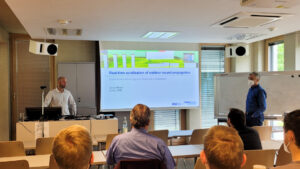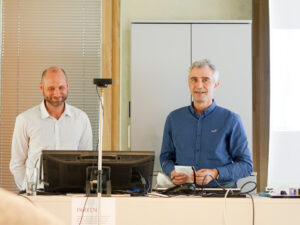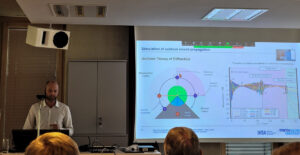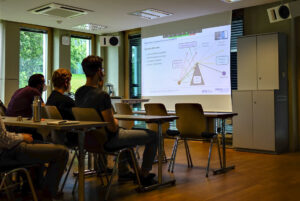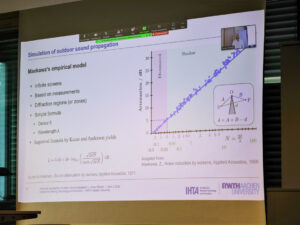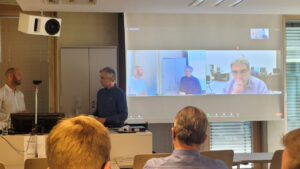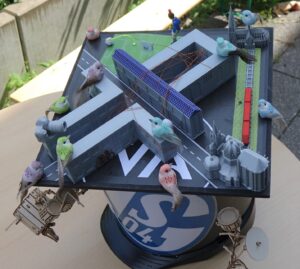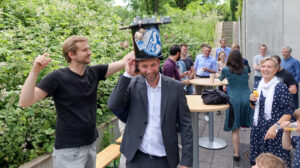Am 3. Juni 2022 hat Herr Jonas Stienen seine mündliche Promotionsprüfung erfolgreich abgeschlossen.
Herr Stienen promovierte über das Thema:
„Real-time auralisation of outdoor sound propagation“
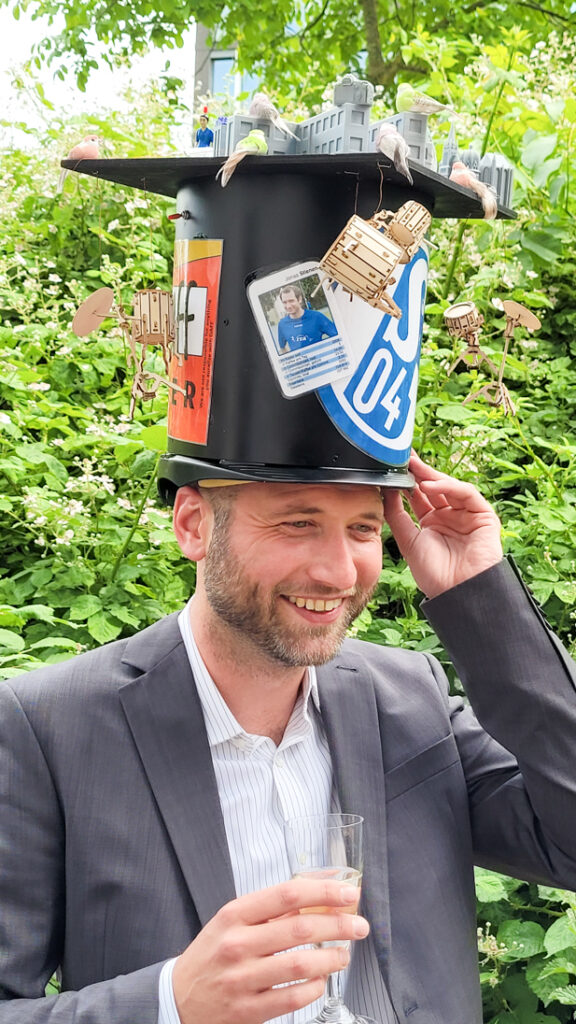
Doktorhut- und Doktortape-Übergabe
Das IHTA gratuliert sehr herzlich!
Abstract der Doktorarbeit:
Auralisation describes the process of generating and presenting audible sound using computer programs and audio hardware. Since the result is perceived naturally by the human’s auditory system, a demonstration by means of auralisation is easily comprehensible and does neither require background knowledge nor expertise. Producing auralisation under real-time constraints increases the implementation demands significantly. Real-time auralisation is required in applications that respond to user interaction, for example, in interactive Virtual Reality (VR) environments. Dynamically moving sound sources and receivers evoke a change in the perceived sound, and the corresponding result must be provided as quickly as possible. A feeling of immersion can be created if the response time of the system does not exceed perceptual thresholds and thus enables a plausible scene presentation. To achieve this emotional state, real-time auralisation must comply with the expected physical behaviour.
The realisation of a real-time auralisation application for outdoor environments represents a promising addition to current noise assessment procedures. It also delivers the foundation for the auditory modality in outdoor VR scenarios, which can server as as an audio-video tool for perception-related scientific investigations.
In the past, auralisation has gained much attention in room acoustics. An attempt to transfer the established concepts and approaches to outdoor environments reveals two systemic deficiencies.
Firstly, room acoustic simulations are commonly based on Geometrical Acoustics (GA), which determines reflected sound rapidly and with high accuracy, but struggles to incorporate diffracted sound. In most urban settings, however, the transmission of sound from a noise source to a receiver contains a significant contribution of both reflected and diffracted components. Furthermore, dynamic virtual environments are time-variant. Traditional realisations often neglect this characteristic, treating an acoustic environment as temporarily static on a frame-by-frame basis. Adaption to dynamic events is implemented by transition of sequences of time-invariant simulations, which is contradictory to the highly dynamic nature of outdoor scenarios.
To address these two misconceptions, a real-time auralisation system is suggested that attaches increased importance to fast geometric diffraction simulations and is based on an audio rendering network that reflects the time-variant nature of dynamic outdoor sound propagation.
- Beginn des öffentlichen Promotionsvortrags
- Einleitung durch Prof. Michael Vorländer
- Während des öffentlichen Promotionsvortrag
- Während des öffentlichen Promotionsvortrag
- Während des öffentlichen Promotionsvortrag
- Fragerunde mit Prof. Vorländer und Zweitgutachter Prof. Julio Cesar Boscher Torres
- Doktorhut
- Übergabe des Doktorhutes


